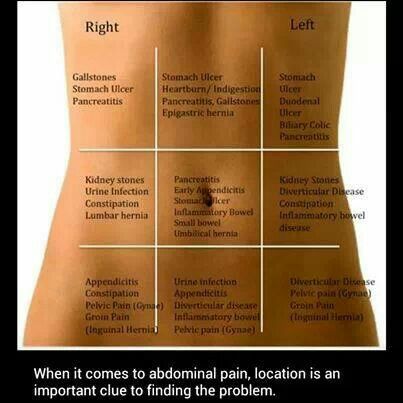
The most effective diagnosis for patients with abdominal pain is based on the patient’s history. It includes pain characteristics and where it occurs. If the pain is associated with bowel movement or eating, it should be noted. The pattern of the pain and any other symptoms should also be recorded. During the physical examination, a physician should look for areas of tenderness, distention, or mass. If there is blood in stools, this should be noted as well.
There are several types of abdominal pain. Some abdominal pains are widespread and poorly localized. In some cases, the pain isn’t associated with a typical site. For example, a person experiencing right lower quadrant (RUQ) pain may have a right colonic diverticulitis. However, acute appendicitis may be presenting with a LLQ pain. While the causes of these abdominal pain are many, the differential diagnosis for the patient should not exclude any other possible cause.
Usually, patients with abdominal pain have an injury in the previous days. The pain may be referred to the surrounding somatic nerves. In such cases, an accurate diagnosis is very difficult. For example, patients suffering from a recurrent bout of recurrent or chronic functional abdominal pain may have a recurrent or recurring episode of the pain. Fortunately, there are several books that can help physicians make an accurate diagnosis.
The most important resource for learning more about abdominal pain is Gray’s Anatomy For Students, which covers the entire body. This textbook is widely used for medical students and consists of chapter chapters on the abdominal wall. In addition to Gray’s Anatomy For Students, there are several other excellent resources for studying the abdominal wall. A physician’s guide to physical examination and history-taking is also a valuable source of information.
It is often hard to determine which cause of abdominal pain is the most effective. Sometimes, the pain may be due to a pulled muscle, or it may be an injury that occurred in the past few days. The pain may be minor, or it may be a result of a serious condition. An examination by a physician is recommended when it’s unclear what is causing the pain. The patient’s physical exam should be performed by a doctor.
Typically, abdominal pain is caused by an injury that occurred a few days before. Some people may experience a severe, chronic pain or recurring pain. The pain can be short-lived or recurrent, and it can be characterized by its nature and severity. It can be severe enough to interfere with daily activities, make people unable to sit still, and cause depression. It can also be a sign of a more serious underlying problem.
Most abdominal pain is attributed to an injury that has occurred in the previous few days. It may be a result of an injury in the body’s musculature or organs. It can also be caused by a ruptured appendix or other ruptured organ. The patient may have some symptoms or a combination of the two. Regardless of the cause, an accurate diagnosis is crucial for the patient and the physician.
Although abdominal pain is a common complaint, it should not be underestimated. The difference between the types of pain can be severe and life-threatening. Abdominal pain comes in many forms. There are two types: parietal and visceral. A parietal pain is a dull pain caused by inflammation of a particular organ. Both types of abdominal pain should be treated. During an acute attack of acute pain, the patient should rest.
Often, abdominal pain occurs due to problems in the abdominal cavity. This is often caused by an infection that causes fluid to leak from the organ. In addition, infection in the small intestine can lead to inflammation of the parietal peritoneum, making correct diagnosis difficult. An acute abdomen is a condition that requires immediate treatment. Depending on the severity of the pain, treatment may be difficult.
The first step in assessing abdominal pain is an examination. The doctor will examine the general appearance of the patient and his posture. They should watch their breathing. In some cases, pain can be a symptom of a serious illness. Other conditions, such as viral gastroenteritis, are often asymptomatic. In these cases, the patient should seek treatment and advice at the site https://www.blogdanoeliabrito.com/. Ultimately, the doctor will determine whether the pain is caused by severe or simple abdominal pain.
